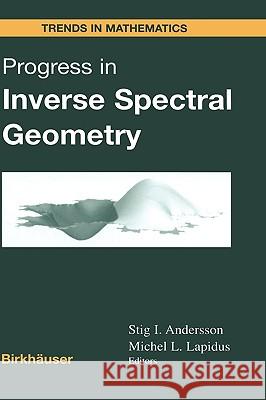Progress in Inverse Spectral Geometry » książka
Progress in Inverse Spectral Geometry
ISBN-13: 9783764357559 / Angielski / Twarda / 1997 / 197 str.
most polynomial growth on every half-space Re (z)::::: c. Moreover, Op(t) depends holomorphically on t for Re t > O. General references for much of the material on the derivation of spectral functions, asymptotic expansions and analytic properties of spectral functions are A-P-S] and Sh], especially Chapter 2. To study the spectral functions and their relation to the geometry and topology of X, one could, for example, take the natural associated parabolic problem as a starting point. That is, consider the 'heat equation' (%t + p) u(x, t) = 0 { u(x, O) = Uo(x), tP which is solved by means of the (heat) semi group V(t) = e-; namely, u(., t) = V(t)uoU. Assuming that V(t) is of trace class (which is guaranteed, for instance, if P has a positive principal symbol), it has a Schwartz kernel K E COO(X x X x Rt, E* (r)E), locally given by 00 K(x, y; t) = L>-IAk( k (r) 'Pk)(X, y), k=O for a complete set of orthonormal eigensections 'Pk E COO(E). Taking the trace, we then obtain: 00 tA Op(t) = trace(V(t)) = 2:: >- k. k=O Now, using, e. g., the Dunford calculus formula (where C is a suitable curve around a(P)) as a starting point and the standard for malism of pseudodifferential operators, one easily derives asymptotic expansions for the spectral functions, in this case for Op."











